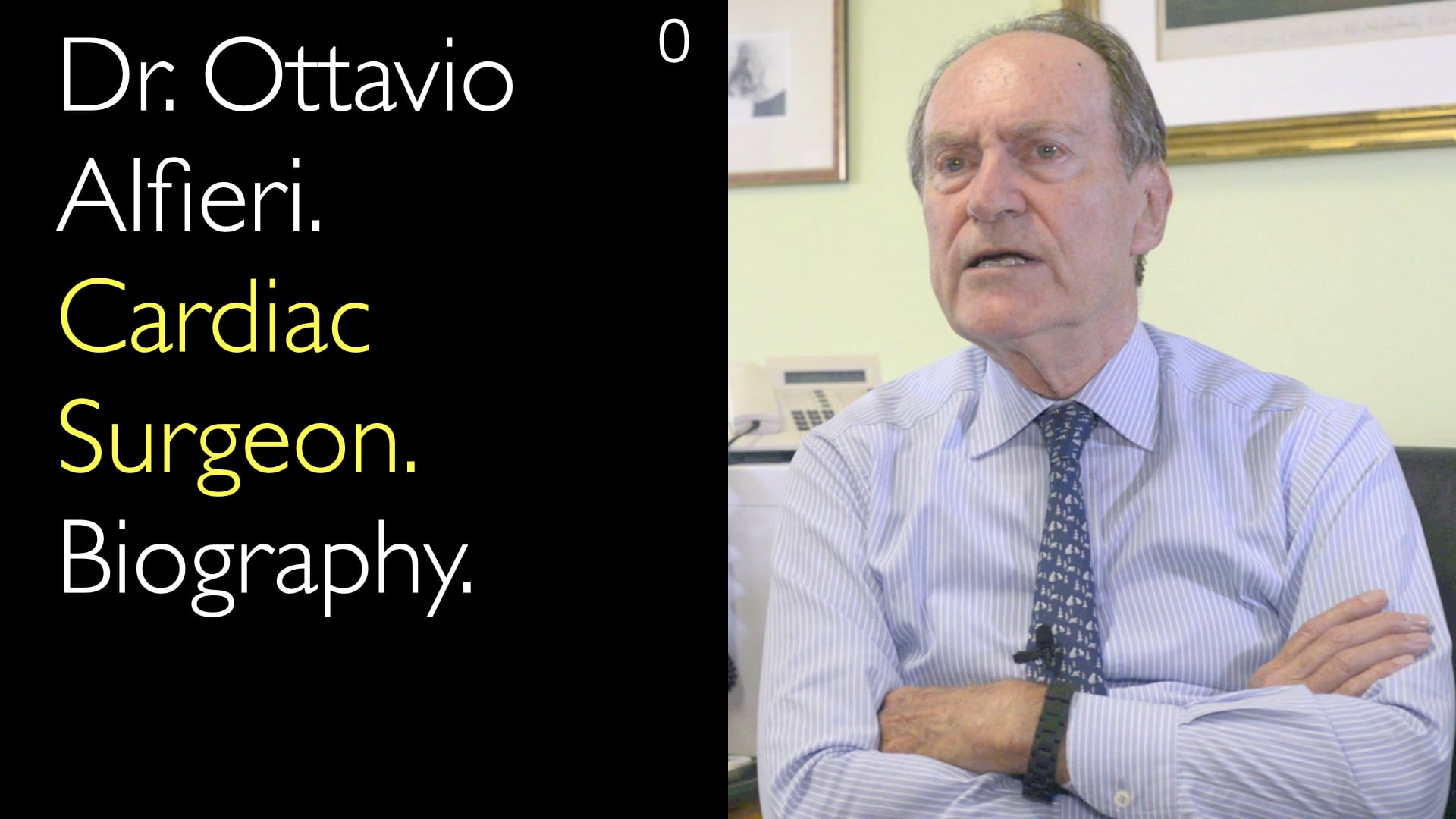심장병 전문의 Ottavio Alfieri 박사(MD)는 승모판막 경피적 수복 분야의 선도적 권위자로, MitraClip 시스템의 장점과 임상 적용에 대해 설명합니다. MitraClip은 경피적 에지투에지 수복 기술로, 고위험 수술 환자들에게 최소 침습적 치료 옵션을 제공합니다. Alfieri 박사는 해부학적 적합성과 환자 선정 기준의 중요성을 강조하며, 적절한 대상자 선정에 대해 논의합니다. 또한 기능성 승모판막 역류, 특히 심부전 및 좌심실 기능 장애와 연관된 경우에서의 치료 역할을 부각하고, MitraClip과 전통적 개심술의 결과를 비교 분석합니다.
경피적 승모판 수복술: MitraClip 시스템 설명
목차 바로가기
승모판 역류에 대한 MitraClip의 장점
MitraClip 시스템은 승모판 역류 환자에게 특히 효과적인 경피적 승모판 수복술의 대표적인 기법입니다. Ottavio Alfieri 박사는 MitraClip이 최소 침습적 대안으로 고위험 수술 환자에게 적합하다고 강조합니다. 전 세계적으로 10만 명 이상의 환자가 Alfieri 기법을 바탕으로 한 이 edge-to-edge 수복법의 혜택을 받았습니다.
MitraClip 시술 대상자 선정
Alfieri 박사는 MitraClip이 고령, 동반 질환 또는 허약 상태를 보이는 환자뿐 아니라 심한 좌심실 기능 부전 환자에게 이상적이라고 설명합니다. 이러한 요소들은 수술 위험을 높여 MitraClip을 선호할 만한 선택지로 만듭니다. 환자의 선호도도 중요한 역할을 하는데, 특히 빠른 회복을 원하거나 개심술에 대한 두려움이 있는 경우 그러합니다.
개심술과의 비교
개심술이 승모판 질환에 대해 뛰어난 장기 결과를 제공하지만, Alfieri 박사는 MitraClip이 고위험 환자에게 현실적인 대안이라고 지적합니다. 그는 수술을 안전하게 받을 수 있는 환자에게는 경피적 접근법을 권하지 않는데, 수술 결과가 더 우수하기 때문입니다. 그러나 수술을 견딜 수 없는 환자에게는 MitraClip이 저위험 효과적인 해결책을 제공합니다.
기능성 대 기질성 승모판 역류
MitraClip은 심부전 및 좌심실 리모델링과 흔히 연관된 기능성 승모판 역류에 특히 효과적입니다. Alfieri 박사는 좌심실이 확장되고 제대로 수축하지 않는 경우 MitraClip이 권장되는 1차 치료 선택지라고 설명합니다. 기질성 승모판 역류의 경우 더 나은 결과를 위해 개심술이 선호되는 옵션으로 남아 있습니다.
MitraClip에 대한 지침과 권고사항
최근 유럽 지침에 따르면, MitraClip은 기능성 승모판 역류 환자에게 2A 등급으로 권장되며, 이러한 경우 고려해야 함을 나타냅니다. Alfieri 박사는 개심술이 2B 등급 권고를 받아 고려될 수는 있으나 주요 선택지는 아니라고 지적합니다. 기능성 승모판 역류 치료에서 MitraClip의 역할은 현대 심장 치료에서의 중요성을 강조합니다.
전체 전문
Anton Titov 박사: 경피적 승모판 수복술은 오늘날 기능성 및 기질성 승모판 역류를 가진 많은 환자에게 치료 옵션입니다. 승모판 수복을 위한 MitraClip 시스템은 무엇인가요? 어떤 환자가 MitraClip 시스템으로 가장 큰 혜택을 받나요?
Ottavio Alfieri 박사: edge-to-edge 승모판 수복 기법의 큰 장점 중 하나는 경피적 승모판 수복 방법의 길을 열었다는 점입니다. 실제로 edge-to-edge 기법은 경피적 승모판 수복 치료의 기초가 되었습니다. 오늘날 이는 전 세계적으로 매우 광범위하게 사용됩니다.
10만 명 이상의 환자가 edge-to-edge 경피적 기법(Alfieri 기법)의 혜택을 받았음을 상기해야 합니다. 확실히, 이 방식으로 치료받은 환자들은 고위험 수술군—특히 고령이거나 동반 질환, 허약 상태를 보이는 환자들입니다. 심한 좌심실 기능 부전을 가진 환자들도 경피적 승모판 수복술에 적합합니다.
이런 요소들이 수술 위험을 매우 높여—수술적 처치의 이점이 사라질 정도까지 만듭니다. 그래서 저는 특히 그러한 환자에게 경피적 edge-to-edge 승모판 수복 기법이 치료에 매우 중요한 역할을 할 수 있다고 생각합니다.
그리고 MitraClip은 귀하와 동료들에 의해 개발되었습니다. 이제 이는 전 세계에서 가장 일반적인 경피적 승모판 수복 방법 중 하나로 인정받고 있습니다.
Ottavio Alfieri 박사: MitraClip은 확실히 현재 세계에서 가장 널리 사용되는 경피적 승모판 수복 기법입니다. MitraClip과 그 다음 방법 사이에는 큰 차이가 있습니다. MitraClip이 훨씬 더 일반적으로 사용되는 경피적 승모판 수복 기법입니다.
물론 다른 경피적 기법들도 있습니다—예를 들어, 환판륜 성형술은 경피적으로 링 성형술을 재현하여 수행될 수 있습니다. 경피적 환판륜 성형술은 가끔 수행되지만 MitraClip에 비해 덜 빈번합니다.
우리는 또한 경피적 방법으로 승모판을 대체할 가능성도 가지고 있습니다. 이는 아직 매우 표준화되지 않았습니다. 많은 수의 환자가 카테터 기반 경피적 치료 방법을 통해 승모판을 교체받지는 않았습니다.
그래서 승모판 대체도 경피적 기법으로 가능합니다. 어떤 종류의 환자가 가장 혜택을 받나요? 단순히 개방적 승모판 대체술에 대한 수용 불가능한 수술 위험만이 경피적 승모판 수복술의 적응증인가요?
Ottavio Alfieri 박사: 오늘날 전통적 수술에 매우 고위험인 환자들이 있습니다. 그러한 환자들이 MitraClip으로 혜택을 받을 수 있습니다. 왜냐하면 우리가 그들에게 MitraClip으로 효과적인 경피적 치료를 제공할 수 있다면, 이는 MitraClip 시술의 위험이 극히 낮기 때문에 선호되어야 합니다.
그래서 대화 중 조금 전에 언급하셨듯이, 환자의 바람도 개심술 기법(예: 승모판 수복술)과 경피적 승모판 치료 기법 사이 선택에 상당한 역할을 합니다. 그래서 아마도 의학적 정의에 기반해 최고위험 수술군으로 간주되지 않는 환자일 수 있습니다. 하지만 그 환자는 더 빠르게 회복하길 원하거나 개심술을 진정으로 두려워할 수 있습니다. 오늘날 경피적 기법의 결과를 개심술과 비교하여 승모판 치료에 대해 어떻게 저울질하나요?
Ottavio Alfieri 박사: 승모판 질환에서, 개심술은 최상의 결과를 제공하며 장기 결과가 매우 좋습니다. 그래서 매우 낮은 위험으로 개심술을 받을 수 있고 개심술로부터 우수한 결과를 기대할 수 있는 사람에게 경피적 기법을 제안하는 것은 어렵습니다.
그래서 그러한 특정 경우에는, 환자의 바람을 고려하는 데 오히려 주저할 것입니다. 왜냐하면 그것이 그의 이익에 부합하지 않기 때문입니다. 그리고 그러한 경우에는, 보통 환자와 이야기하는 것이 매우 쉽습니다. 그에게 경피적 승모판 치료 방법이 최선의 방법이 아니라고 설득하는 것이 쉽습니다.
물론, [승모판 수복 또는 대체의] 경피적 방법은 매우 매력적일 수 있습니다. 하지만 우리는 현실을 직시해야 합니다. 우리는 결과를 직시하고 각 치료 절차의 장기적 이점을 고려해야 합니다.
아마도 환자가 그럼에도 불구하고 경피적 승모판 치료 방법을 선택합니다. 그렇다면 그들이 10년 또는 5년 후에 재수술을 받을 것이라고 기대할 수 있다는 뜻인가요? 아니면 단순히 기능적 결과가 개방 수술만큼 좋지 않은 것인가요?
Ottavio Alfieri 박사: 네, 이것은 [승모판과 심장의] 해부학에 달려 있습니다. 결과는 개심술의 결과와 비교할 수 없으며, 특히 기질성 승모판 역류 상황에서 그러합니다. 기능성 승모판 역류에서는 다릅니다. 문제가 특히 좌심실에 위치하는 경우에는. 적절히 수축하지 않습니다. 좌심실이 확장되고, 등등.
그러한 경우에는, MitraClip이 1차 치료 옵션으로 제안될 수 있습니다. MitraClip은 수술적 승모판 수복 방법에 비해 더 매력적인 옵션입니다. 사실, 최근 유럽 지침에서, edge-to-edge 경피적 승모판 수복은 2A 등급 권고로 제시됩니다. 이는 그러한 특정 환자에게 고려되어야 함을 의미합니다.
개심술 옵션은 2A 등급이 아닙니다. 2B 등급 권고이므로 개방 수술이 고려될 수 있습니다.
그것은 매우 중요합니다. 기능성 승모판 역류, 즉 심부전과 좌심실의 리모델링을 동반한 내재적 심장 질환으로 인한 승모판 역류에 대한 MitraClip.
Ottavio Alfieri 박사: 정확히, 정확히요. 그래서 그러한 경우에는, MitraClip이 해부학적 관점에서 적합하다면, 올바른 치료 선택이 될 수 있습니다.





